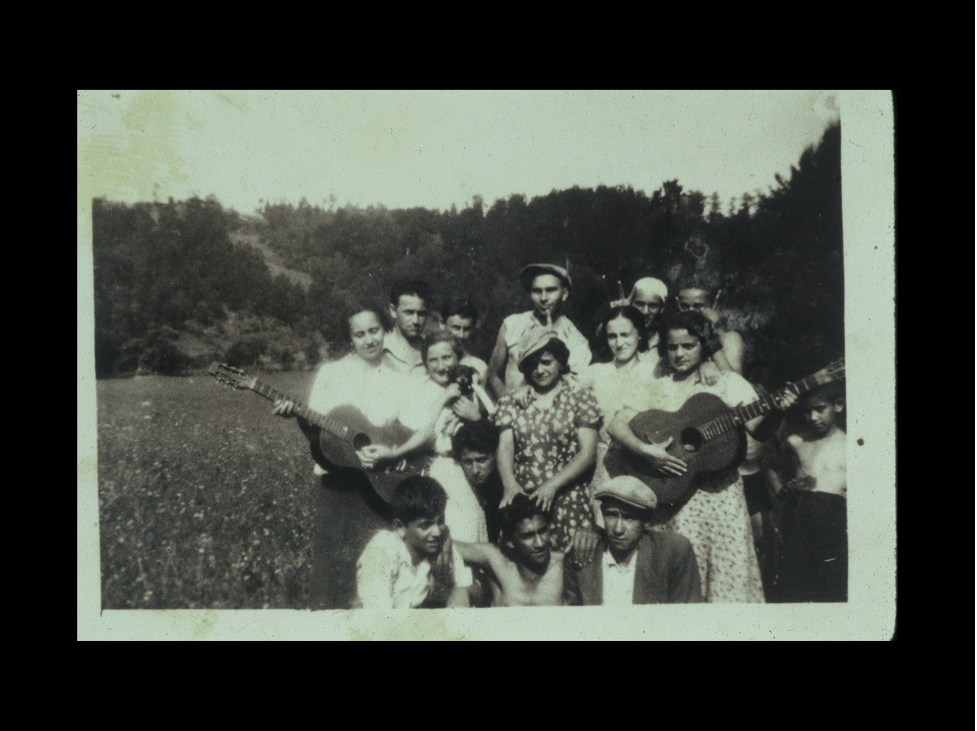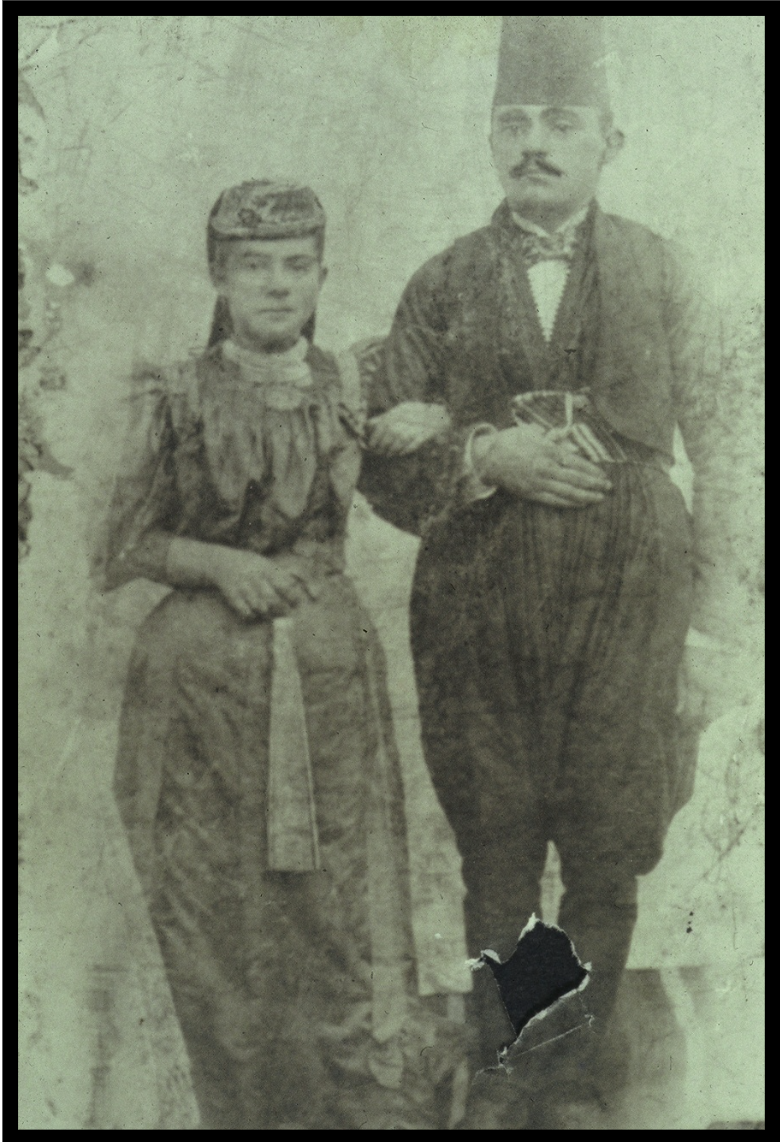Flory was so generous with her time and energy, always ready to talk to members of the audience who approached her at concerts, often during intermissions. Sometimes we worried that she would be exhausted before we got to the second half of the program. I recall one such occasion when I was tempted to escort Flory backstage during intermission, but Susan advised me not to. “This is oxygen to her! She lives for this,” Susan said. That was part of the miracle of Flory Jagoda, a survivor of so much tragedy and loss: her love for people was inexhaustible. So many times I would hear her say to people she’d just met, “I love you!” And I know she meant it.
When Susan and Tina Chancey (who was also a member of La Rondinella) and I formed Trio Sefardi in 2010, at first we didn’t tell Flory about it. We wanted to see if we could function as a group, with the idea that we’d continue Flory’s work but also explore Sephardic repertoire from other sources. Our initial concerts were non-public house concerts, but by the fall of that year we felt ready to move forward so we told Flory about the group. We are taken aback by her reaction. “How can you be in two groups?” she asked. She said that if Susan and I were going to have our own group we could no longer be part of her trio. That took us completely by surprise, since it seemed logical to us that we could do both, and we endured a very painful couple of months. However, when she received an invitation to perform at the 2011 summer music festival in Sarajevo it was Susan and me that Flory called; and my program archives show that we did several others with Flory during that year and many more in the years to come. Flory realized that Trio Sefardi was doing exactly what she always wanted, to sing the songs she’d made, to tell the stories of the lost communities of the Sephardim, “to continue.”
Anyone who is interested in exploring Sephardic music these days can draw on a wide range of printed and recorded sources. In the 20th century folklorists and ethnomusicologists began hunting for traditional songs, fearing that rapid urbanization would mean the end of centuries-old traditions that survived mainly in rural communities and villages. In the US, the English folklorists Cecil Sharp and Maude Karpeles trekked through the Applachians, followed by John Lomax and his son Alan. In Europe, Percy Grainger and Cecil Sharp scoured the English countryside; Bela Bartok was hunting folk songs in rural Hungary; Alberto Hemsi looked for Sephardic songs in his native Turkey and other Sephardic strongholds, followed by Leon Algazi, IJ Katz, Yitzhak Levy, Joseph Silverman, Susana Weich-Shahak, Judy Frankel, and others.
The most thorough publications of Sephardic songs (Levy’s Chants Judeo-Espagnols, for example) provide the town or city where a given song was collected. Over the years that I’ve been involved with Sephardic music, I’ve collected as many of these publications as possible; many, sadly, are now out of print. It puzzles me that I have yet to see any mention of songs collected in the Altaracs’ home village of Vlaseniça, or even very many from Sarajevo, despite its well-deserved reputation as a Sephardic center prior to World War II. I think that a lot of the collecting by the above-mentioned folklorists was done in the post-war era, after the destruction of the communities, among the scattered survivors.
Which brings me back to Flory. Her family was known as the Singing Altaracs. Her Nona, Berta Altarac, collected songs, song fragments, old sayings, and other bits of folklore, which she kept in a drawer in her kitchen; all of that was lost in the war. Miraculously and against all odds, Flory survived. After the war and the tragic loss of nearly all of the Jews of Vlaseniça, Flory’s mother, Rosa, did not want to talk about or hear anything that reminded her of what happened to her family. So, in the home she shared with Flory and Harry no Ladino was spoken and none of the old songs were sung until after Rosa’s death in 1973 and Michael Kabilio’s (Flory’s stepfather, but whom she always called “my father”) death in 1978. After that, as Betty Jagoda Murphy, Flory’s eldest daughter, put it, the treasure chest opened and out came all the memories and the songs.




Flory’s repertoire included some of the romanzas (ballads), such as “Anderleto” and “Noches, noches,” and arrangements of old songs like “Yo hanino, tu hanino” and “Madre miya si mi muero.” Sometimes she put new melodies to existing songs or used old melodies for new lyrics. As generations of Sephardic women had done before her, Flory made new songs, mostly to celebrate and remember her family and the community that she knew while living with her Nona and Nonu in childhood. While we celebrate Flory the singer, storyteller, and teacher, it is important to acknowledge her contributions as a skilled composer and arranger. When Flory taught Susan and me her songs, she taught us well-thought-out instrumental and vocal harmony parts, so when we perform her songs we adhere closely to her style. If you listen to our recordings of “Las tiyas,” “La Yave d’Espanya,” and “Sviraj harmoniku,” for example, you will hear what I mean. Almost all her songs can be played with three chords (I can only think of one song that uses four), much like familiar American folk songs, and yet there is always a distinctive Balkan flavor, often expressed through rhythm and distinctive vocal ornamentation.
Starting with “Ocho kandelikas” (Flory would sometimes say sardonically, “I’m so tired of this song!”), Flory gave us songs about her family, about Purim, Pesach, Shabbat, and more, and such songs as “La Yave d’Espanya,” “Sviraj harmoniku,” and “Rikordus di mi nona,” that give us a deeply personal and painful sense of loss and tragedy that Sephardic communities suffered over many centuries. Joy and sorrow, history and legend, religion and tradition: all can be heard in Flory’s songs.
Nona Flory brought her gift of music and memory to audiences around the world, and she taught her songs to all who wanted to learn them. Flory lived the wisdom of her Nona and all the generations of mothers and grandmothers that came before, embodied most powerfully in Berta Altarac’s oft-quoted injunction, “Si nu puedis meter la alma, nu kantis” (If you can’t put your soul into your songs, don’t bother singing). Those who knew Flory, who made music with her, who attended her concerts and listened to her recordings will be forever grateful for teaching us that lesson. There can be no greater gift, no more important legacy, than what Flory gave so generously to us. Now it is our duty, our honor, and our privilege to remember, and to continue.
Howard Bass, February 12, 2021
